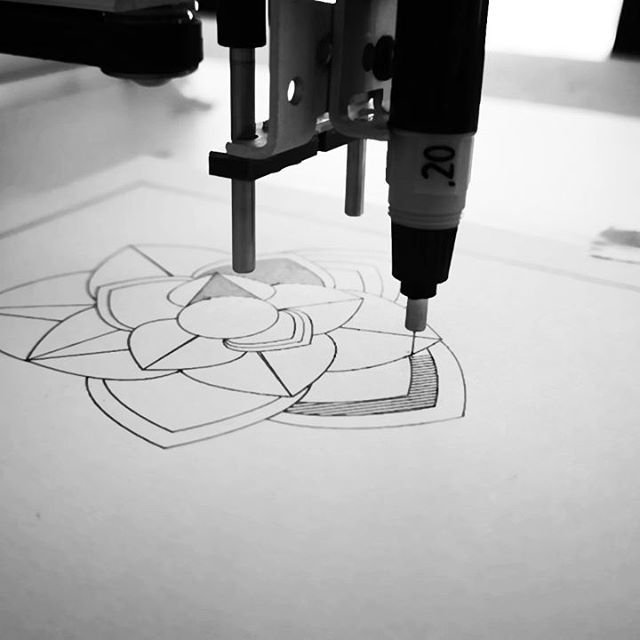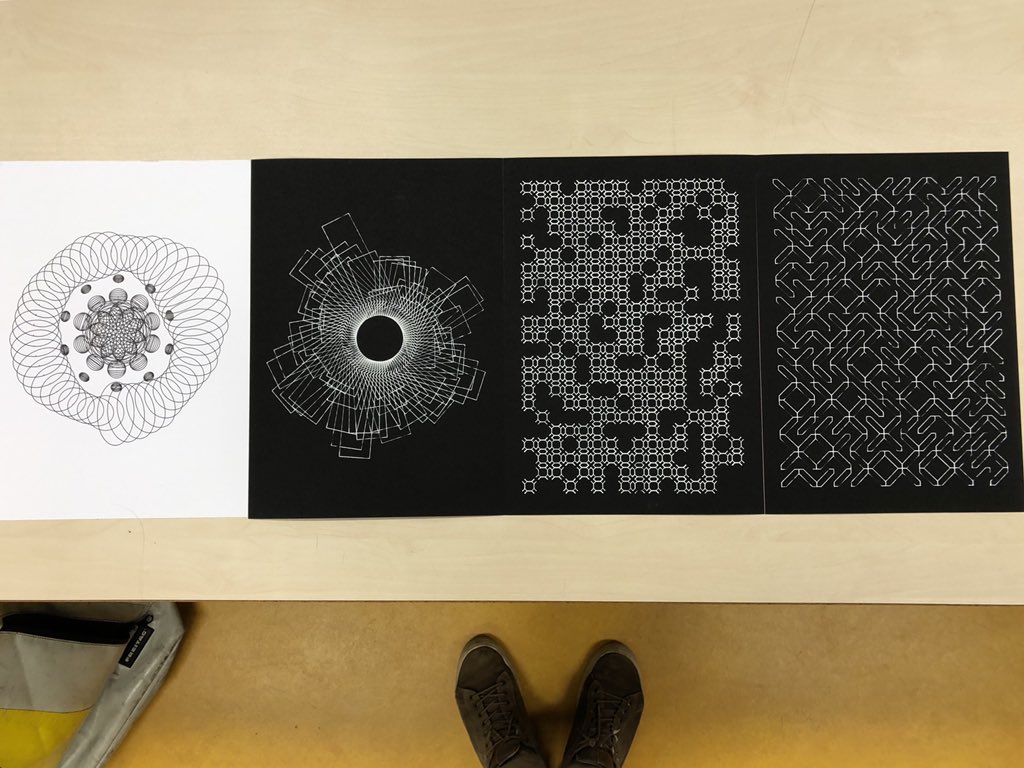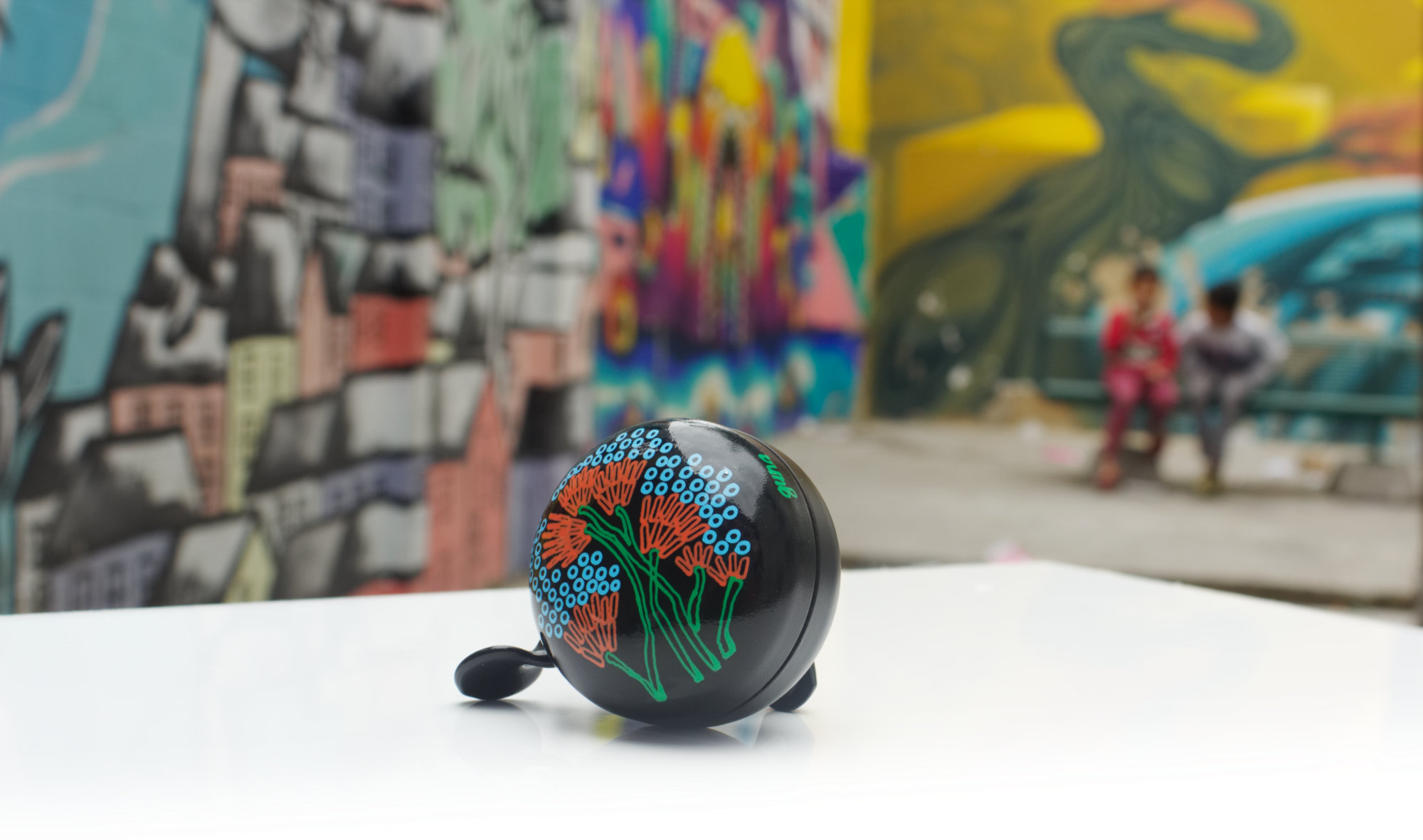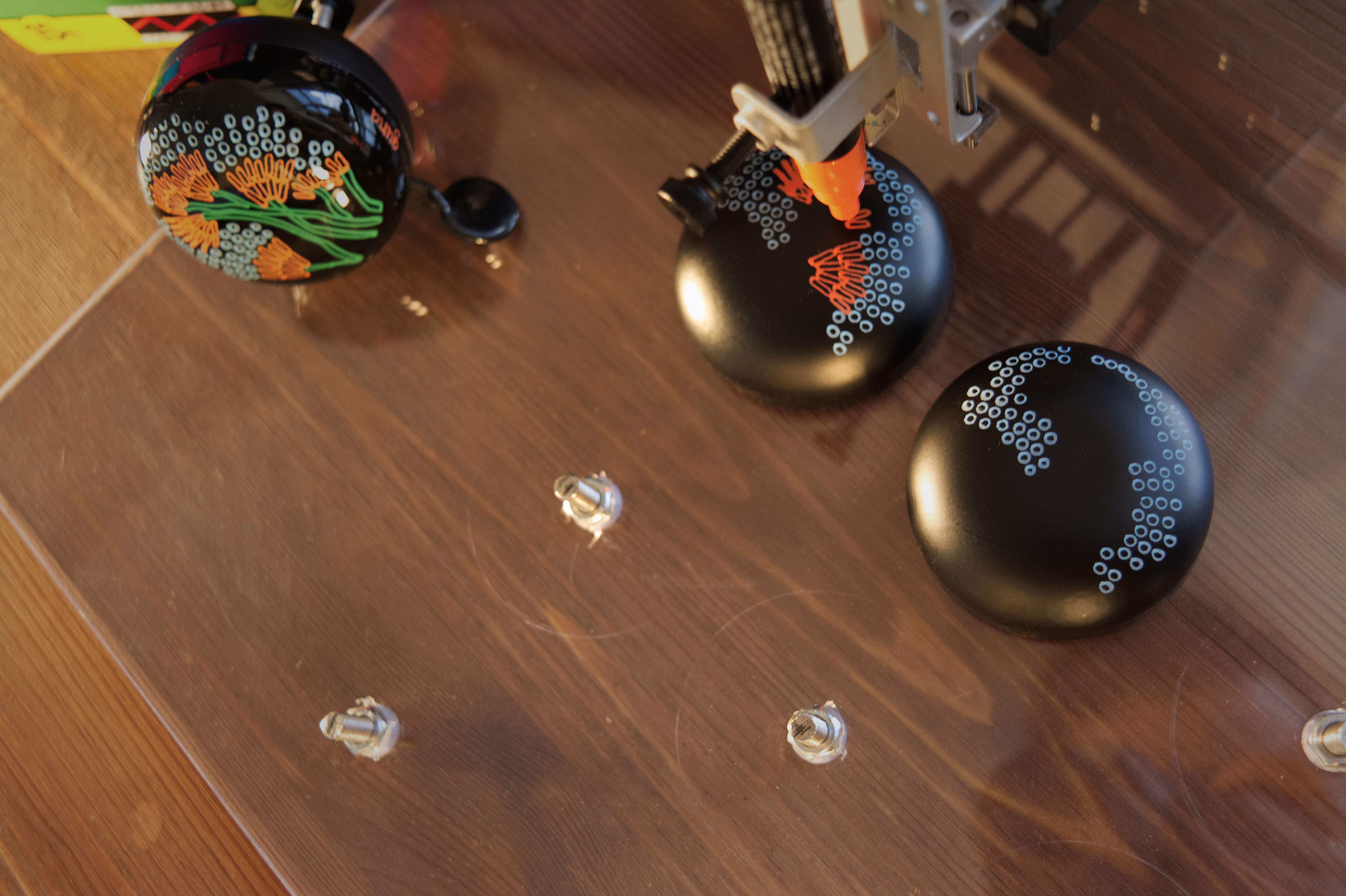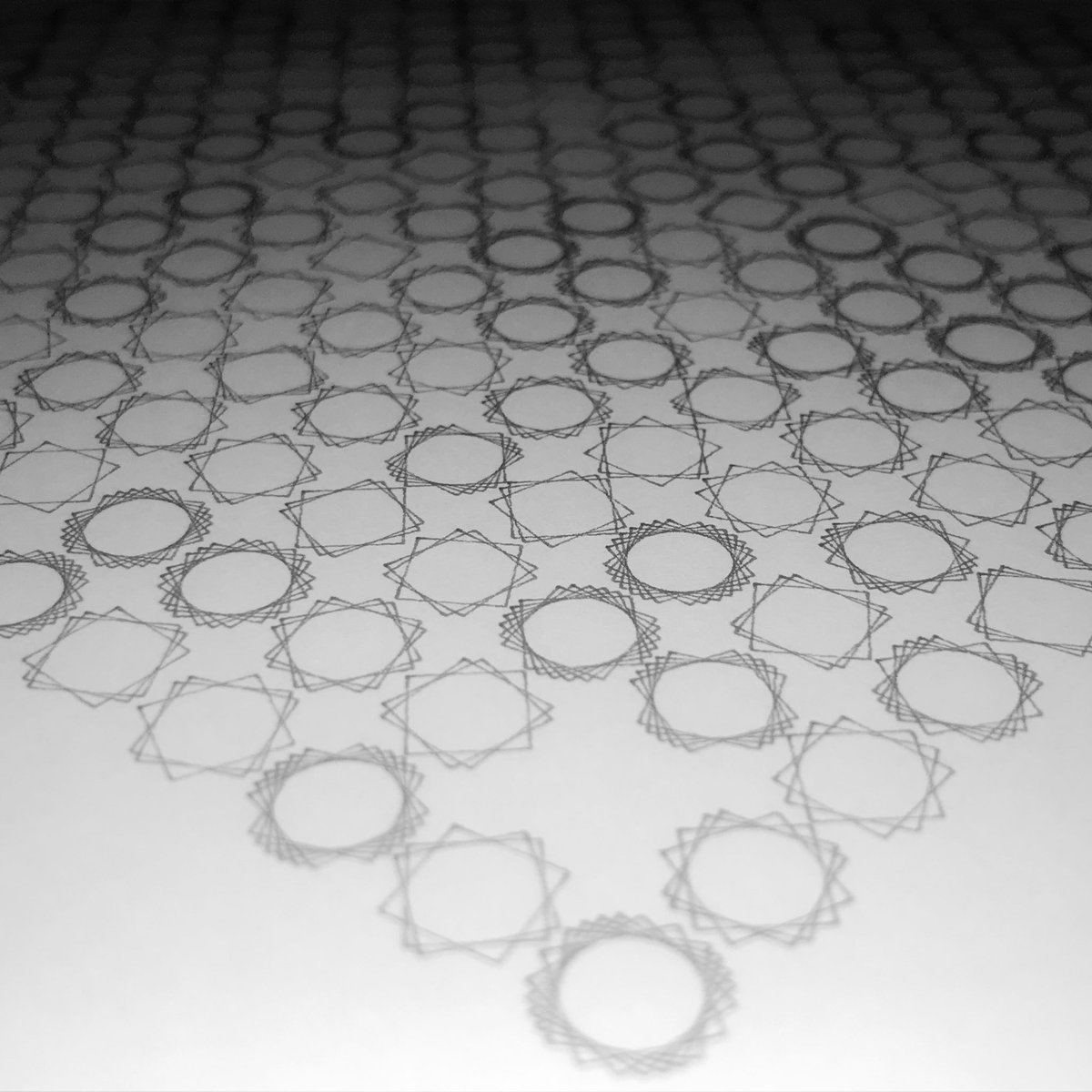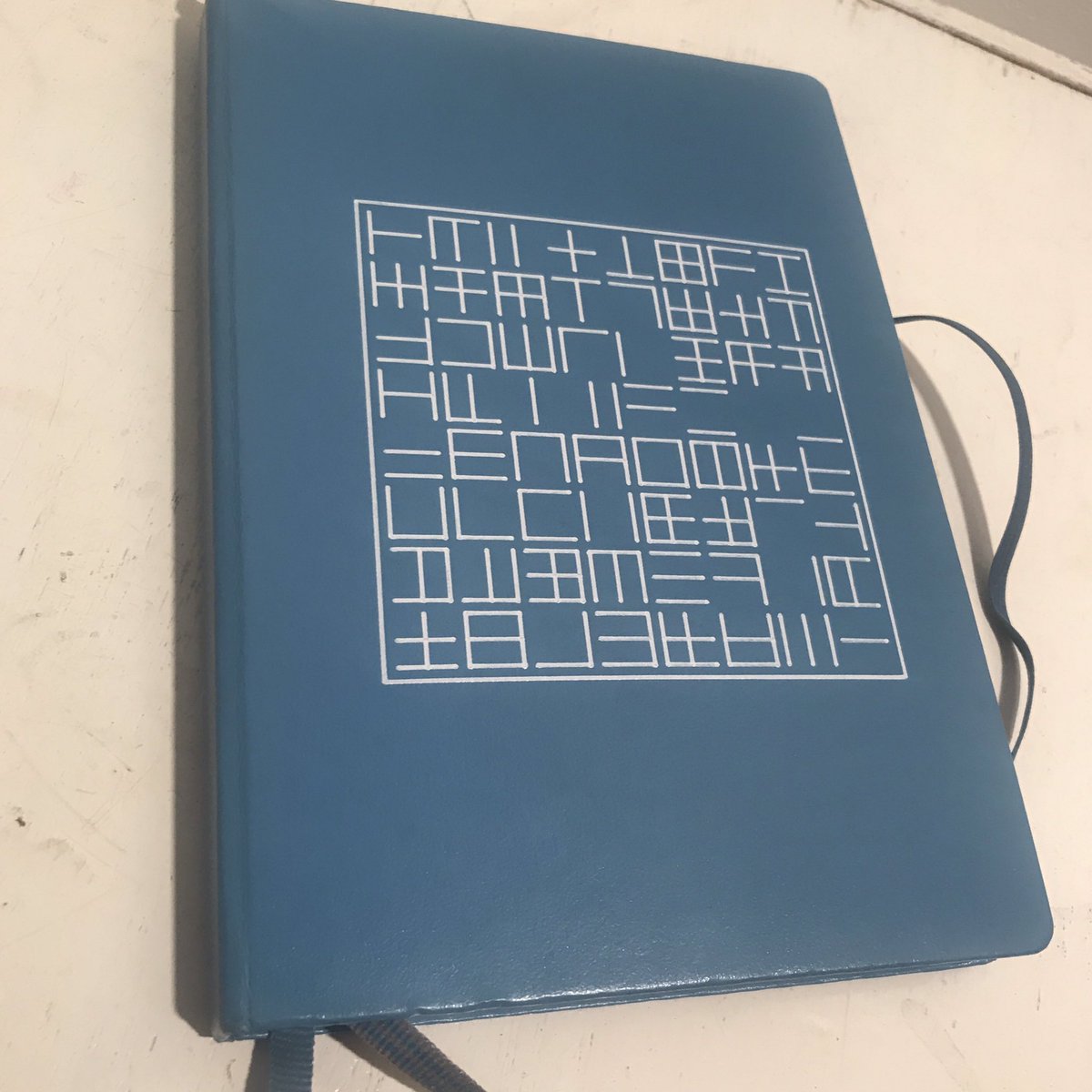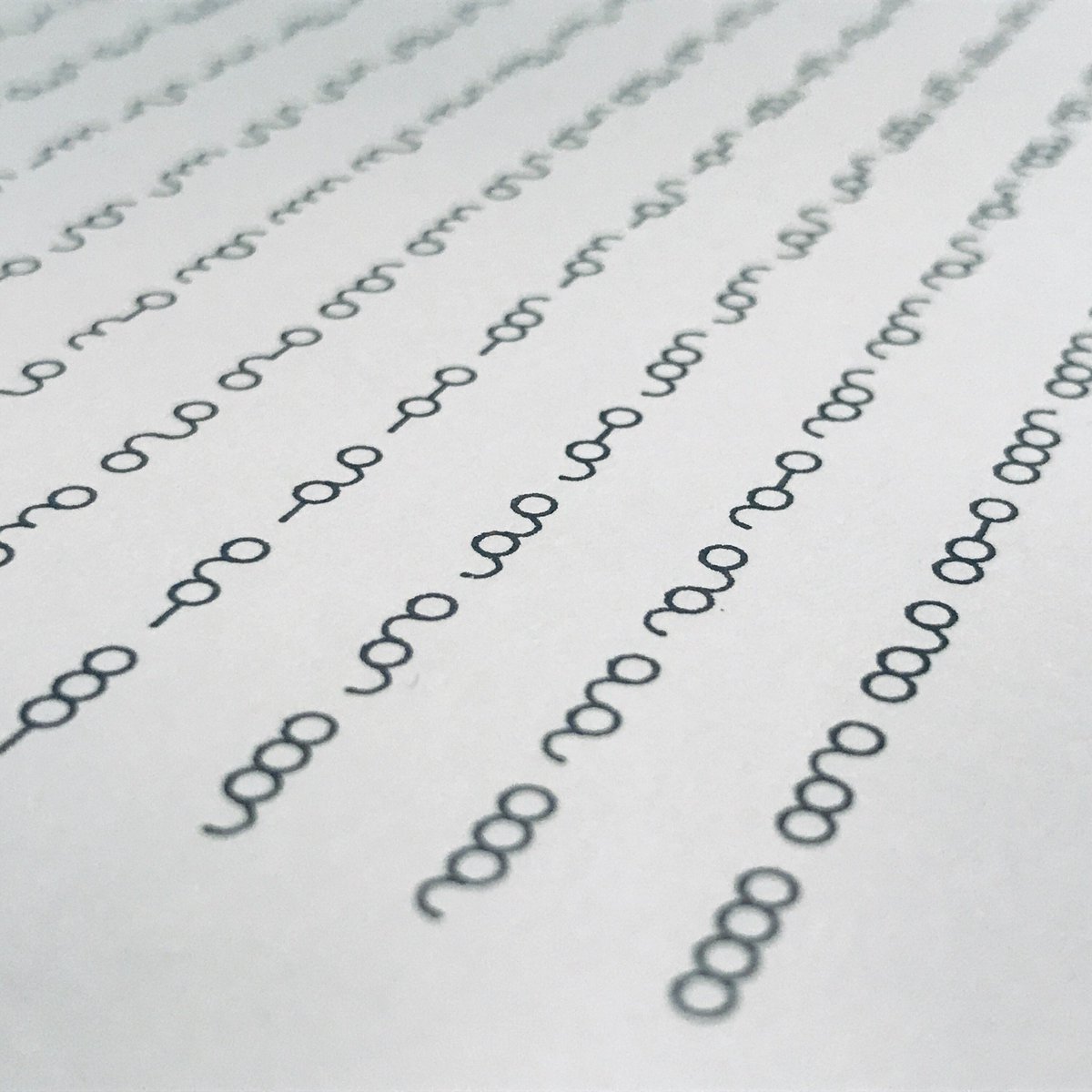
Bleeptrack is a generative artist who works in a variety of media, but we are of course particularly fond of her plotter work with AxiDraw. We were privileged to see her work displayed at the Plotter People meetup in San Francisco. One particularly cool and generous thing she has done a few times is to create and then share tools to generate artwork.
For her overflower project, you can use her generator which lets you set a few parameters and generate flowers which you can save as SVG files.
She has used overflower not just for plots but also for fabric printing and she has produced some beautiful bags for sale from the fabrics.
The label on this floppy disk (which was used with a vintage digital camera to store pictures) was made by plotting onto label stock with an AxiDraw, with a drawing from the 35c3 circuit generator, which
creates fictional electric circuits with a message inbetween the lines. The design is in the style of the event design of 35c3 (Chaos Communications Congress). The project was built to enable all participants to easily create their own decorative circuits and ended up ‘highjacking’ the original event iconography. During the 4 days of 35c3, the circuit generator was used hundrets of times and resulting images were displayed all round the event halls, stages, stickers, appearal and banners.
You can read more about the fictional circuit generator on its project page.
For her Bugs and beetles project the Beetle code is up on github and you can play with the generator.
She has used the generator to make stickers and connected the generator to a print-on-demand t-shirt shop (in Germany) so that you can have your own unique bugs on a shirt. Her beetlesbot twitter bot generates and posts a new beetle every 8 hours.
My favorite non-generative Bleeptrack plot uses the data from her vacuum as it mapped the space in her home. The robot motion is plotted within the floor plan of the house.
You can check out her other projects on her website and follow her latest on twitter and instagram. You can support her on patreon and check out her merch page.




